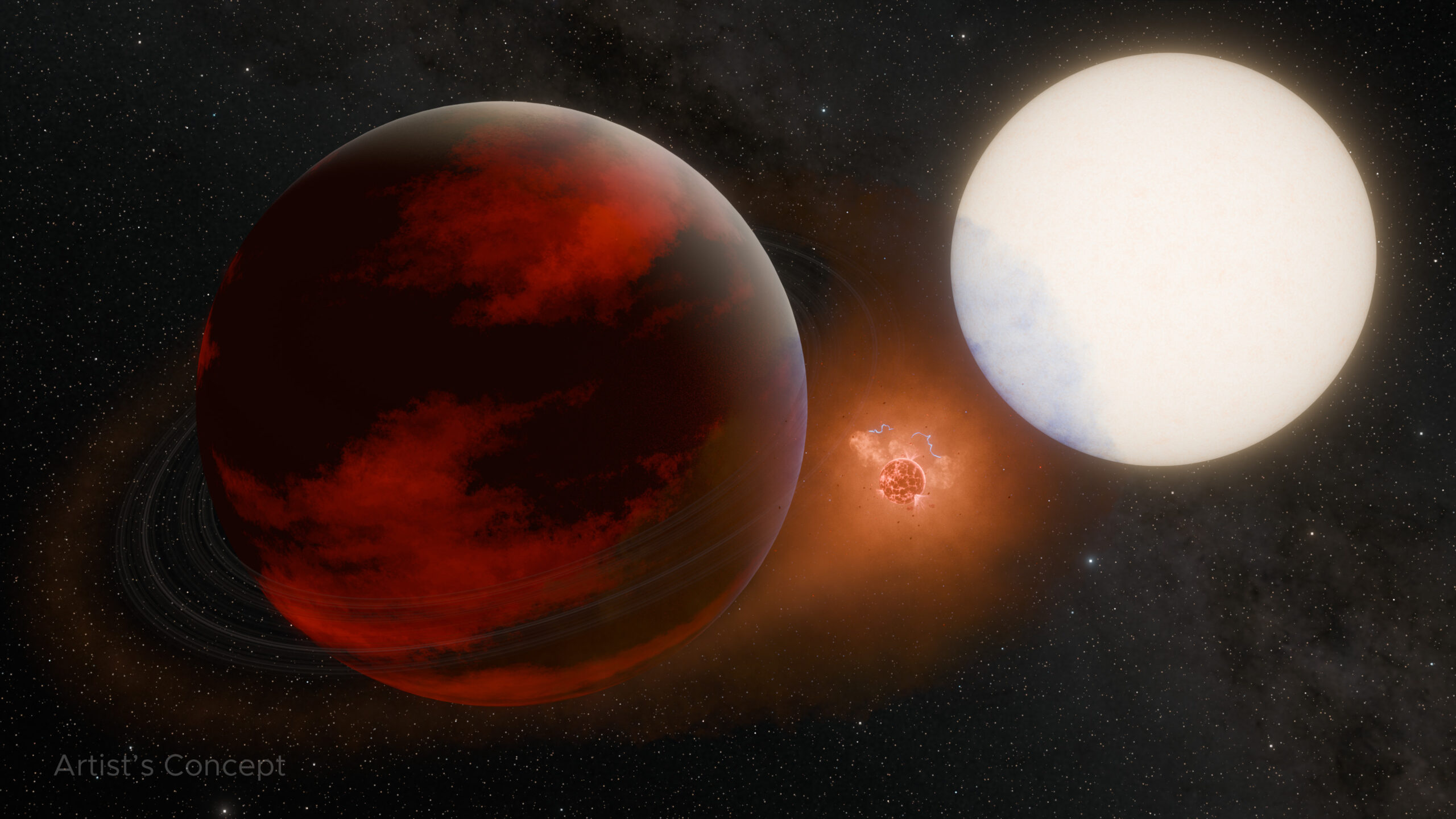Astronomers have discovered compelling evidence of a potential volcanic moon orbiting an exoplanet located 635 light-years from Earth. This finding could lead to the first confirmed detection of an exomoon, a moon outside our solar system. The sodium cloud detected around the exoplanet WASP-49 b hints at the presence of a separate, potentially volcanic body, similar to Io, Jupiter’s highly volcanic moon. Further observations are needed to confirm this extraordinary discovery that could revolutionize our understanding of planetary systems beyond the Milky Way.

Unraveling the Mysteries of Exomoons
The search for exomoons, or moons orbiting planets outside our solar system, has long been an intriguing frontier in planetary science. While astronomers have identified several exomoon candidates in the past, the existence of these distant celestial companions has yet to be conclusively confirmed.
Now, a team of researchers from NASA’s Jet Propulsion Laboratory (JPL) in Southern California may have made a significant breakthrough in this quest. By studying the exoplanet WASP-49 b, a Saturn-sized gas giant located 635 light-years from Earth, they have uncovered evidence of a potential volcanic moon orbiting this distant world.
The key to this discovery lies in the detection of a sodium-rich cloud surrounding WASP-49 b. This cloud, which appears to be separate from the planet’s atmosphere, shares striking similarities with the gassy plumes emitted by Io, the most volcanically active body in our solar system and a moon of Jupiter.
Unveiling the Potential Volcanic Exomoon: Clues from the Sodium Cloud
The researchers’ analysis of the sodium cloud around WASP-49 b provides several intriguing clues about the possible presence of an exomoon.
First, the cloud is located high above the planet’s atmosphere, much like the plume of gas that Io constantly produces around Jupiter. Additionally, the cloud’s high sodium content and sudden changes in size further suggest that it is a separate body, rather than originating from the planet itself.
Furthermore, the researchers found that the cloud appears to be moving faster than the planet, indicating that it is generated by another body, potentially an exomoon, orbiting WASP-49 b independently.
Another piece of evidence is the fact that the cloud’s behavior does not align with the planet’s 2.8-Earth-day orbital cycle. By using computer models, the researchers have shown that the presence of an exomoon with an eight-hour orbit around the planet could explain the irregularities observed in the cloud’s structure and movement.
While these findings are highly compelling, the researchers acknowledge that further study is necessary to confirm the existence of this potential exomoon. Longer observations will be needed to identify patterns in the cloud’s orbit and structure, providing more definitive evidence of this extraordinary discovery.
“The evidence is very compelling that something other than the planet and star are producing this cloud,” said Rosaly Lopes, a co-author of the study and a planetary geologist at JPL. “Detecting an exomoon would be quite extraordinary, and because of Io, we know that a volcanic exomoon is possible.”
Implications and the Path Forward
The potential discovery of a volcanic exomoon around WASP-49 b would be a groundbreaking achievement in the field of exoplanet research. Not only would it represent the first confirmed detection of a moon outside our solar system, but it would also provide valuable insights into the formation and evolution of planetary systems beyond the Milky Way.
If confirmed, this exomoon could share similarities with Io, the most volcanically active body in our solar system. Understanding the characteristics and behavior of such a distant volcanic moon could shed light on the processes that shape the surfaces and atmospheres of moons and planets in general.
Moreover, this discovery could pave the way for the detection of other exomoons, potentially leading to a better understanding of the diversity of planetary systems and the role that moons play in their evolution. As Rosaly Lopes noted, “Detecting an exomoon would be quite extraordinary, and because of Io, we know that a volcanic exomoon is possible.”
The next step for the researchers is to continue their observations of the WASP-49 b system, gathering more data to confirm the existence and characteristics of the potential exomoon. Longer-term monitoring will be crucial to establish patterns in the cloud’s behavior and structure, providing the evidence needed to conclusively determine whether this is indeed the first exomoon ever discovered.
